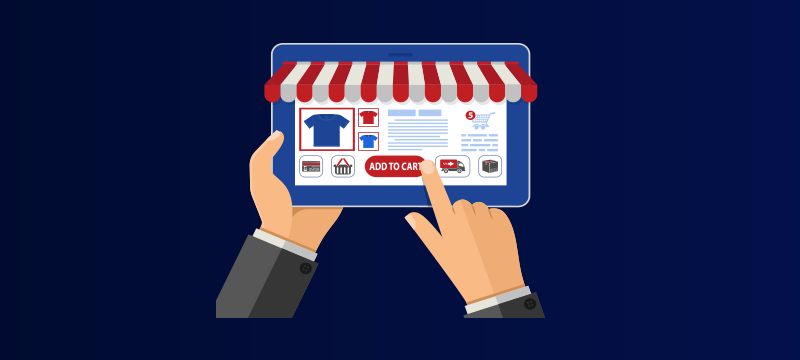When building your online store, the secret to success lies in creating the site your customers want. After all, they are the ones the site caters for and if you can’t meet their needs and expectations they’ll go elsewhere to do their shopping. To help out, we are going to take a look at seven things that customers expect from a retail website, today.
- Speed
The speed at which your website loads and responds to customer interactions directly affects its ability to sell. A one-second delay in loading time has been shown to cut conversion rates by around 7%. Today, visitors expect websites to perform effortlessly, loading instantly and reacting just as quickly when they click on links and buttons or input information.
Getting that right means hosting your site with a reliable web host and choosing high performance hosting with enough storage, CPU, RAM and bandwidth to produce those all-important speeds. On top of this, you’ll need to optimise your site so it works more efficiently and make use of caching and content delivery networks. - A well-designed website
In many ways, your online space is just like a physical store. It has to be somewhere that feels inviting and comfortable. It needs to be clean, tidy and well organised with products easy to find and displayed to look at their very best. Customers want the experience to be convenient and enjoyable with help when needed (e.g. FAQs and chatbots) and no delays when it comes to checking out.
Remember, besides being a tool for people to buy things, the design of your website represents your brand on the internet and has a huge influence over whether visitors will stay, return and recommend or leave and criticise. The shopping experience your design offers matters to your customers and affects the bottom line. - Easy to find products
You don’t need thousands of products to have a successful online shop, but you do need to have a well-curated selection that matches your brand and the expectations of your customers. If you have many products, it can become confusing for visitors to find the ones they are looking for and can even result in them being unable to make a purchasing decision – the last thing you need.
The use of menus, product and brand filters and search bars can help customers quickly find what they need, cutting down the number of clicks needed to get to the checkout, while comparison and related products plugins can give them other options to consider.
To make it even easier, make sure any searches or recommendations your website shows are useful to the visitor. For example, it can be helpful if they include a product image, price and brief description. - User-friendly product pages
A well-crafted product page makes it much easier for the customer to make a purchasing decision. They’ll already know what the product is, but they’ll want to find out the brand, the price and how soon they can have delivery as soon as they reach the page.
Following this, they’ll want to see several images of the item, with zoom if possible, plus a product specification to give them details on size, shape, weight, materials, etc. Additionally, for products with different buying options (size, colour, multi-buy, etc.) they’ll want to quickly choose their options. The easier you make this for them and the more questions you can answer in the details you give, the better the chances of making a sale. - Customer reviews
The modern shopper often needs convincing that a product is as good as you make it out to be and will look for social proof in the form of a customer review. Enabling customer reviews is a healthy option that allows customers to give feedback and for others to read their comments.
Obviously, not all customers will give 5 stars and no-one really expects them (it can make the reviews look a little suspect if all your products have nothing but five-star reviews!) What customers want are honest opinions that will help them make a choice. If a product is constantly getting poor reviews, then it’s helpful for you to know too, so you can stop selling it. - Personalised recommendations
Shoppers are highly attracted to websites that give personalised recommendations as these are often exactly what they are looking for and it enhances the customer experience. However, doing so means enabling customer accounts, collecting data and analysing that data in order to select the right products for them.
Of course, in the modern age, this doesn’t happen manually, it is done with the help of product recommendation engines that analyse the data and create personalised homepages for individual customers. Its what you find on Amazon, eBay and many other leading websites. You can get product recommendation engine plugins but most often, companies will use third-party or proprietary platforms that are more powerful and capable of handling the huge quantities of browsing and purchase history data. - Quick checkouts
A huge percentage of customers abandon sales at the checkout stage. While for many this will be the result of them having second thoughts at the last moment, for others it’s because the checkout process isn’t user friendly. The website or the connections with payment providers might be too slow, the company can ask for too much information that takes too long to fill in, there may be hidden extras added to the price (unexpected delivery charges, etc.) or the company might be trying too hard to sell unwanted addons or upsells. It could also be that the customer’s only way of paying isn’t accepted by the website.
Essentially, the longer and more complicated you make it to checkout, the greater the risk of abandonment and the loss of a sale. Customers want quick, one-click, secure payment options, such as with mobile wallets or through PayPal, where there’s no need to type in payment card details.
Conclusion
Whether you are a purely online outlet or have both a website and physical store, a website is an essential ingredient for a modern retail company. To make that website successful in a highly competitive market where the modern consumer valuers experience over price, it is vital that your site is optimised to give the shopping experiences customers expect. Hopefully, the points raised here will explain what these are and how to put them in place.
For high speed, high-performance web hosting, visit our homepage.

